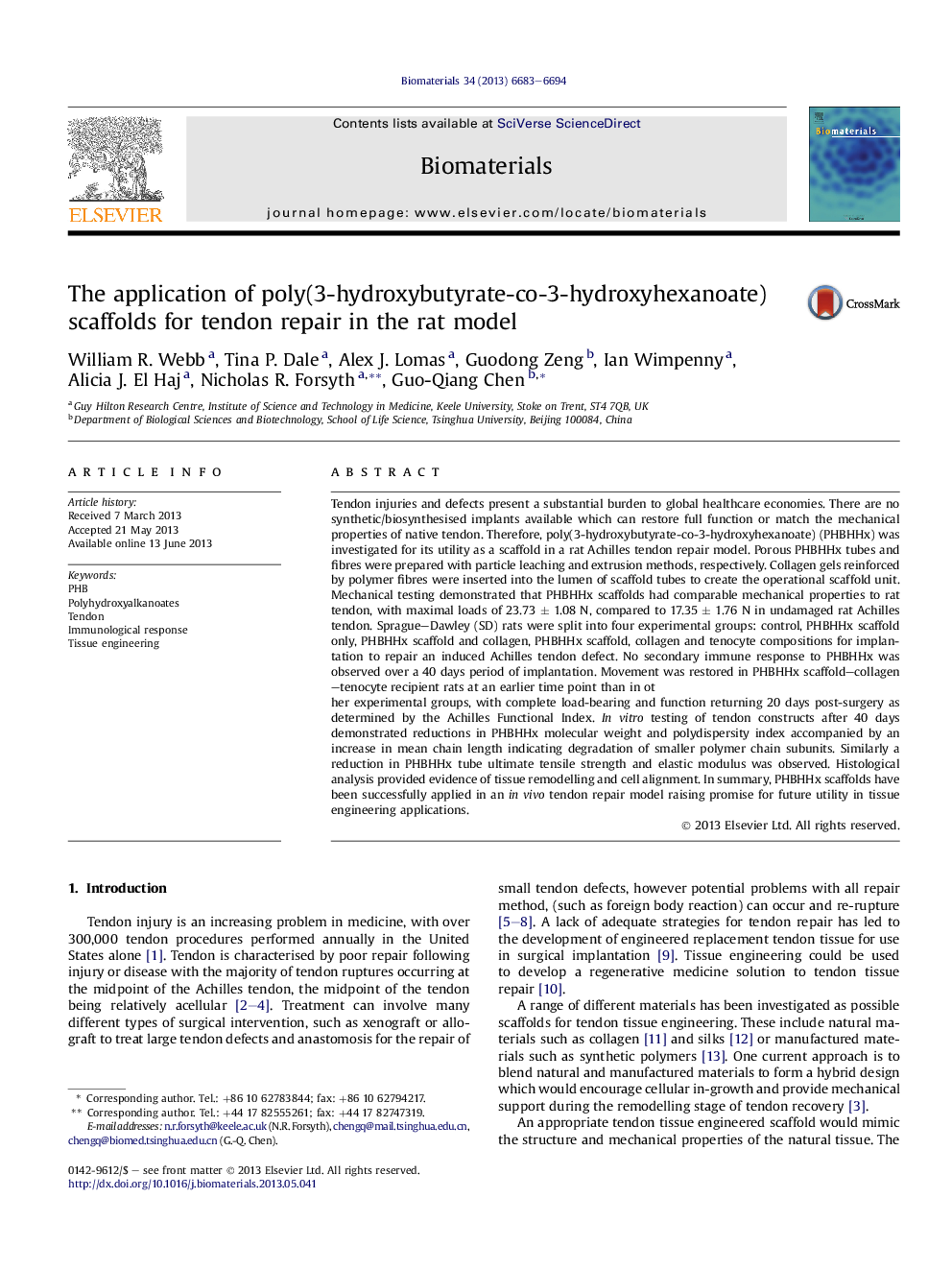| کد مقاله | کد نشریه | سال انتشار | مقاله انگلیسی | نسخه تمام متن |
|---|---|---|---|---|
| 10228903 | 498 | 2013 | 12 صفحه PDF | دانلود رایگان |
عنوان انگلیسی مقاله ISI
The application of poly(3-hydroxybutyrate-co-3-hydroxyhexanoate) scaffolds for tendon repair in the rat model
دانلود مقاله + سفارش ترجمه
دانلود مقاله ISI انگلیسی
رایگان برای ایرانیان
کلمات کلیدی
موضوعات مرتبط
مهندسی و علوم پایه
مهندسی شیمی
بیو مهندسی (مهندسی زیستی)
پیش نمایش صفحه اول مقاله

چکیده انگلیسی
Tendon injuries and defects present a substantial burden to global healthcare economies. There are no synthetic/biosynthesised implants available which can restore full function or match the mechanical properties of native tendon. Therefore, poly(3-hydroxybutyrate-co-3-hydroxyhexanoate) (PHBHHx) was investigated for its utility as a scaffold in a rat Achilles tendon repair model. Porous PHBHHx tubes and fibres were prepared with particle leaching and extrusion methods, respectively. Collagen gels reinforced by polymer fibres were inserted into the lumen of scaffold tubes to create the operational scaffold unit. Mechanical testing demonstrated that PHBHHx scaffolds had comparable mechanical properties to rat tendon, with maximal loads of 23.73 ± 1.08 N, compared to 17.35 ± 1.76 N in undamaged rat Achilles tendon. Sprague-Dawley (SD) rats were split into four experimental groups: control, PHBHHx scaffold only, PHBHHx scaffold and collagen, PHBHHx scaffold, collagen and tenocyte compositions for implantation to repair an induced Achilles tendon defect. No secondary immune response to PHBHHx was observed over a 40 days period of implantation. Movement was restored in PHBHHx scaffold-collagen-tenocyte recipient rats at an earlier time point than in other experimental groups, with complete load-bearing and function returning 20 days post-surgery as determined by the Achilles Functional Index. In vitro testing of tendon constructs after 40 days demonstrated reductions in PHBHHx molecular weight and polydispersity index accompanied by an increase in mean chain length indicating degradation of smaller polymer chain subunits. Similarly a reduction in PHBHHx tube ultimate tensile strength and elastic modulus was observed. Histological analysis provided evidence of tissue remodelling and cell alignment. In summary, PHBHHx scaffolds have been successfully applied in an in vivo tendon repair model raising promise for future utility in tissue engineering applications.
ناشر
Database: Elsevier - ScienceDirect (ساینس دایرکت)
Journal: Biomaterials - Volume 34, Issue 28, September 2013, Pages 6683-6694
Journal: Biomaterials - Volume 34, Issue 28, September 2013, Pages 6683-6694
نویسندگان
William R. Webb, Tina P. Dale, Alex J. Lomas, Guodong Zeng, Ian Wimpenny, Alicia J. El Haj, Nicholas R. Forsyth, Guo-Qiang Chen,